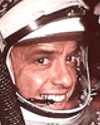
Born 18 Nov 1923; died 21 Jul 1998 at age 74. quotes
Alan Bartlett Shepard, Jr. was an American astronaut who was America's first man in space and one of only 12 humans who walked on the Moon. Named as one of the nation's original seven Mercury astronauts in 1959, Shepard became the first American into space on 5 May 1961, riding a Redstone rocket on a 15-minute suborbital flight that took him and his Freedom 7 Mercury capsule 115 miles in altitude and 302 miles downrange from Cape Canaveral, FL. (His flight came three weeks after the launch of Soviet cosmonaut Yuri Gagarin, who on 12 Apr 1961, became the first human space traveler on a one-orbit flight lasting 108 minutes.) Although the flight of Freedom 7 was brief, it was a major step for the U.S. in a race with the USSR.
Alan Bartlett Shepard, Jr. was an American astronaut who was America's first man in space and one of only 12 humans who walked on the Moon. Named as one of the nation's original seven Mercury astronauts in 1959, Shepard became the first American into space on 5 May 1961, riding a Redstone rocket on a 15-minute suborbital flight that took him and his Freedom 7 Mercury capsule 115 miles in altitude and 302 miles downrange from Cape Canaveral, FL. (His flight came three weeks after the launch of Soviet cosmonaut Yuri Gagarin, who on 12 Apr 1961, became the first human space traveler on a one-orbit flight lasting 108 minutes.) Although the flight of Freedom 7 was brief, it was a major step for the U.S. in a race with the USSR.
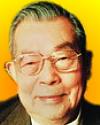
Born 18 Nov 1906; died 27 Jun 1998 at age 91.
Chinese ornithologist (a.k.a. Tso-Hsin Cheng) who is considered the founder of modern Chinese ornithology, who was internationally renowned for his scientific study of birds. His love of nature and the colorful forest birds began in his childhood, when he learned to identify many birds by their calls. He did graduate work in the U.S. leading to a doctorate in Jun 1930, then returned to China. He spent 60 years doing field work and research in ornithology and conservation. In 1934 he co-founded the China Zoological Society. He was the deputy-director of Beijing Museum of Natural History. His 30 books, including the first checklist of Chinese birds. In 1987, his book A Synopsis of the Avifauna of China was published in English translation.«
Chinese ornithologist (a.k.a. Tso-Hsin Cheng) who is considered the founder of modern Chinese ornithology, who was internationally renowned for his scientific study of birds. His love of nature and the colorful forest birds began in his childhood, when he learned to identify many birds by their calls. He did graduate work in the U.S. leading to a doctorate in Jun 1930, then returned to China. He spent 60 years doing field work and research in ornithology and conservation. In 1934 he co-founded the China Zoological Society. He was the deputy-director of Beijing Museum of Natural History. His 30 books, including the first checklist of Chinese birds. In 1987, his book A Synopsis of the Avifauna of China was published in English translation.«
A Synopsis of the Avifauna of China, by Zheng Zuoxin. - book suggestion.
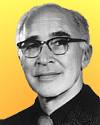
Born 18 Nov 1906; died 12 Apr 1997 at age 90. quotes
American biochemist who shared (with Haldan K. Hartline of the U.S. and Ragnar Granit of Sweden) the 1967 Nobel Prize for Physiology or Medicine for “for their discoveries concerning the primary physiological and chemical visual processes in the eye.” In the early 1930s, in research at Harvard University, he identified that vitamin A was present in the retina of the eye. This was the first discovery of a biological role of a fat-soluble vitamin. Later, Wald expanded Granit’s work on the red, blue and green retinal cones in the eye by establishing the biochemical basis of their sensitivity to different parts of the light spectrum. He was active in political causes such as speaking out against the Vietnam War, nuclear proliferation and the military-industrial complex, and refused to do research on poisonous chemicals for political ends.«
American biochemist who shared (with Haldan K. Hartline of the U.S. and Ragnar Granit of Sweden) the 1967 Nobel Prize for Physiology or Medicine for “for their discoveries concerning the primary physiological and chemical visual processes in the eye.” In the early 1930s, in research at Harvard University, he identified that vitamin A was present in the retina of the eye. This was the first discovery of a biological role of a fat-soluble vitamin. Later, Wald expanded Granit’s work on the red, blue and green retinal cones in the eye by establishing the biochemical basis of their sensitivity to different parts of the light spectrum. He was active in political causes such as speaking out against the Vietnam War, nuclear proliferation and the military-industrial complex, and refused to do research on poisonous chemicals for political ends.«
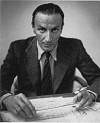
Born 18 Nov 1906; died 3 Oct 1988 at age 81. quotes
Alexander Arnold Constantine Issigonis was a Turkish-British engineer who was the designer of the Mini car, a landmark in automotive design when the British Motor Corporation introduced the Morris Mini-Minor on 26 Aug 1959. It was only 10 ft long, yet seated four passengers, and one of the lowest priced cars on the market. To save space, the engine was mounted transversely, and it had all-independent suspension. Issigonis believed that “when you're designing a new car for production, never, never copy the opposition.” Thus the Mini looked like no other car, provided a vehicle that carried the greatest payload in the smallest practical space, and incorporated new engineering principles. It remains successful over five decades later because he built it from the start for fuel economy, fast acceleration, maneuverability and ease of parking.
Alexander Arnold Constantine Issigonis was a Turkish-British engineer who was the designer of the Mini car, a landmark in automotive design when the British Motor Corporation introduced the Morris Mini-Minor on 26 Aug 1959. It was only 10 ft long, yet seated four passengers, and one of the lowest priced cars on the market. To save space, the engine was mounted transversely, and it had all-independent suspension. Issigonis believed that “when you're designing a new car for production, never, never copy the opposition.” Thus the Mini looked like no other car, provided a vehicle that carried the greatest payload in the smallest practical space, and incorporated new engineering principles. It remains successful over five decades later because he built it from the start for fuel economy, fast acceleration, maneuverability and ease of parking.
MINI 50 Years, by Rob Golding. - book suggestion.
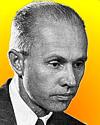
Born 18 Nov 1900; died 7 Dec 1982 at age 82.
George Bogdan Kistiakowsky was a Russian chemist who worked on developing the first atomic bomb but later advocated banning nuclear weapons. He immigrated to the U.S. in 1926, and taught chemistry at Princeton University then Harvard (1930-71). He served as special assistant to President Eisenhower for science and technology (1959-61). As head of the explosives division of the Los Alamos Laboratory during WW II (1944-46), he oversaw 600 people developing explosives for the first atom bomb. The conventional explosives are used for its detonation to uniformly compress the plutonium sphere and achieve critical mass. In 1977, he became chairman of the Council for a Livable World, which opposes nuclear war.
George Bogdan Kistiakowsky was a Russian chemist who worked on developing the first atomic bomb but later advocated banning nuclear weapons. He immigrated to the U.S. in 1926, and taught chemistry at Princeton University then Harvard (1930-71). He served as special assistant to President Eisenhower for science and technology (1959-61). As head of the explosives division of the Los Alamos Laboratory during WW II (1944-46), he oversaw 600 people developing explosives for the first atom bomb. The conventional explosives are used for its detonation to uniformly compress the plutonium sphere and achieve critical mass. In 1977, he became chairman of the Council for a Livable World, which opposes nuclear war.
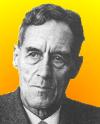
Born 18 Nov 1897; died 13 Jul 1974 at age 76. quotes
(Baron Blackett of Chelsea) Patrick Maynard Stuart Blackett was an English physicist and winner of the Nobel Prize for Physics in 1948 for his discoveries in the field of cosmic radiation. In these studies he used cloud-chamber photographs that revealed the way in which a stable atomic nucleus can be disintegrated by bombarding it with alpha particles (helium nuclei). Although such nuclear disintegration had been observed previously, his data explained this phenomenon for the first time and were useful in explaining disintegration by other means.
(Baron Blackett of Chelsea) Patrick Maynard Stuart Blackett was an English physicist and winner of the Nobel Prize for Physics in 1948 for his discoveries in the field of cosmic radiation. In these studies he used cloud-chamber photographs that revealed the way in which a stable atomic nucleus can be disintegrated by bombarding it with alpha particles (helium nuclei). Although such nuclear disintegration had been observed previously, his data explained this phenomenon for the first time and were useful in explaining disintegration by other means.
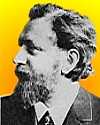
August (Adolph Eduard Eberhard) Kundt was a German physicist who developed a method (1866) to determine the velocity of sound in gases and solids. He used a closed glass tube into which a dry powder (such as lycopodium) has been sprinkled. The source of sound in the original device was a metal rod clamped at its centre with a piston at one end, which is inserted into the tube. When the rod is stroked, sound waves generated by the piston enter the tube. If the position of the piston in the tube is adjusted so that the gas column is a whole number of half wavelengths long, the dust will be disturbed by the resulting stationary waves forming a series of striations, enabling distances between nodes to be measured.
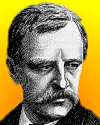
Born 18 Nov 1832; died 12 Aug 1901 at age 68.
Baron Nils Adolf Erik Nordenskiöld was a Swedish geologist, mineralogist and geographer whose explorations included the first ship voyage from Scandinavia (1878) across the Asiatic Arctic through the Northeast Passage. He joined Swedish geologist Otto Torell on polar travels at Spitsbergen (1858 and 1861) where he discovered plant fossils of the Tertiary period. From 1864, he led his own expeditions. His first journey was to make maps of Spitsbergen. In 1868, in the iron steamer Sofia, he reached a greater latitude (82°42'N) than anyone ever had before. In 1870, he visited the west-central coast of Greenland, collected minerals and fossils and studied the inland ice. He made an extensive collection of biological and zoological specimens at Spitsbergen during his 1872–73 exploration.«
Baron Nils Adolf Erik Nordenskiöld was a Swedish geologist, mineralogist and geographer whose explorations included the first ship voyage from Scandinavia (1878) across the Asiatic Arctic through the Northeast Passage. He joined Swedish geologist Otto Torell on polar travels at Spitsbergen (1858 and 1861) where he discovered plant fossils of the Tertiary period. From 1864, he led his own expeditions. His first journey was to make maps of Spitsbergen. In 1868, in the iron steamer Sofia, he reached a greater latitude (82°42'N) than anyone ever had before. In 1870, he visited the west-central coast of Greenland, collected minerals and fossils and studied the inland ice. He made an extensive collection of biological and zoological specimens at Spitsbergen during his 1872–73 exploration.«
The Arctic Voyages of Adolf Erik Nordenskiöld 1858-1879, by Alexander Leslie. - book suggestion.
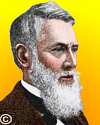
1865
Born 18 Nov 1810; died 30 Jan 1888 at age 77. quotes
America's leading botanist in the mid-19th century, extensively studying North American flora, he did more work than any other botanist to unify the taxonomic knowledge of plants of this region. He was Darwin's strongest early supporter in the U.S.; in 1857, he was the third scientist to be told of his theory (after Joseph Hooker and Charles Lyell). He debated Louis Agassiz between 1859 and 1861 on variation and geographic distribution Gray's discovery of close affinities between East Asian and North American floras was a key piece of evidence in favor of evolution. Though not fully comfortable with selection, he argued that evolution was compatible with religious belief and slid towards theistic evolutionism. Gray co-authoredFlora of North America.
America's leading botanist in the mid-19th century, extensively studying North American flora, he did more work than any other botanist to unify the taxonomic knowledge of plants of this region. He was Darwin's strongest early supporter in the U.S.; in 1857, he was the third scientist to be told of his theory (after Joseph Hooker and Charles Lyell). He debated Louis Agassiz between 1859 and 1861 on variation and geographic distribution Gray's discovery of close affinities between East Asian and North American floras was a key piece of evidence in favor of evolution. Though not fully comfortable with selection, he argued that evolution was compatible with religious belief and slid towards theistic evolutionism. Gray co-authoredFlora of North America.
Asa Gray: American Botanist, Friend of Darwin, by A. Hunter Dupree. - book suggestion.
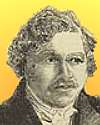
Born 18 Nov 1787; died 10 Jul 1851 at age 63.
French artist and inventor who invented the daguerreotype, the first practical process of photography. Though the first permanent photograph from nature was made in 1826/27 by Joseph-Nicéphore Niepce of France, it was of poor quality and required about eight hours' exposure time. The process that Daguerre developed required only 20 to 30 minutes. The two became partners in the development of Niepce's heliographic process from 1829 until the death of Niepce in 1833. Daguerre continued his experiments, and he discovered that exposing an iodized silver plate in a camera would result in a lasting image after a chemical fixing process.[EB gives date of birth 18 Nov 1787. Some sources give the year as 1789.]
French artist and inventor who invented the daguerreotype, the first practical process of photography. Though the first permanent photograph from nature was made in 1826/27 by Joseph-Nicéphore Niepce of France, it was of poor quality and required about eight hours' exposure time. The process that Daguerre developed required only 20 to 30 minutes. The two became partners in the development of Niepce's heliographic process from 1829 until the death of Niepce in 1833. Daguerre continued his experiments, and he discovered that exposing an iodized silver plate in a camera would result in a lasting image after a chemical fixing process.[EB gives date of birth 18 Nov 1787. Some sources give the year as 1789.]
The Daguerreotype: Nineteenth-Century Technology and Modern Science, by Barger and White. - book suggestion.
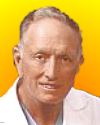
Died 18 Nov 2016 at age 96 (born 22 Aug 1920). quotes
Dr. Denton A(rthur) Cooley is an American surgeon and heart-transplant pioneer who was the first to implant an artificial heart in a human. In 1960s he performed delicate surgery on the hearts of infants with congenital heart disease, and was the first surgeon to successfully remove pulmonary embolisms. On 3 May 1968, Cooley performed his first human heart transplant. On 4 Apr 1969, because no donor heart was available for a dying 47-year-old patient with diseased heart muscle, he implanted a mechanical heart made of silicone as a temporary measure. The experimental artificial heart was used for 65 hours, and was removed when a human heart became available.«
Dr. Denton A(rthur) Cooley is an American surgeon and heart-transplant pioneer who was the first to implant an artificial heart in a human. In 1960s he performed delicate surgery on the hearts of infants with congenital heart disease, and was the first surgeon to successfully remove pulmonary embolisms. On 3 May 1968, Cooley performed his first human heart transplant. On 4 Apr 1969, because no donor heart was available for a dying 47-year-old patient with diseased heart muscle, he implanted a mechanical heart made of silicone as a temporary measure. The experimental artificial heart was used for 65 hours, and was removed when a human heart became available.«
100,000 Hearts: A Surgeon's Memoir, by Denton A. Cooley. - book suggestion.
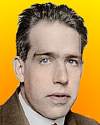
Died 18 Nov 1962 at age 77 (born 7 Oct 1885). quotes
Niels Henrik David Bohr was a Danish physicist who was the first to apply the quantum theory, which restricts the energy of a system to certain discrete values, to the problem of atomic and molecular structure. For this work he received the Nobel Prize for Physics in 1922. He developed the so-called Bohr theory of the atom and liquid model of the nucleus. Bohr was of Jewish origin and when the Nazis occupied Denmark he escaped in 1943 to Sweden on a fishing boat. From there he was flown to England where he began to work on the project to make a nuclear fission bomb. After a few months he went with the British research team to Los Alamos in the USA where they continued work on the project.
Niels Henrik David Bohr was a Danish physicist who was the first to apply the quantum theory, which restricts the energy of a system to certain discrete values, to the problem of atomic and molecular structure. For this work he received the Nobel Prize for Physics in 1922. He developed the so-called Bohr theory of the atom and liquid model of the nucleus. Bohr was of Jewish origin and when the Nazis occupied Denmark he escaped in 1943 to Sweden on a fishing boat. From there he was flown to England where he began to work on the project to make a nuclear fission bomb. After a few months he went with the British research team to Los Alamos in the USA where they continued work on the project.
Suspended In Language: Niels Bohr's Life, Discoveries, And The Century He Shaped, by Jim Ottaviani. - book suggestion.
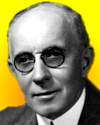
Died 18 Nov 1949 at age 70 (born 5 Sep 1879).
Frank Baldwin Jewett was the U.S. electrical engineer who directed research as the first president of the Bell Telephone Laboratories, Inc., (1925-40). Jewett believed that the best science and technology result from bringing together and nurturing the best minds. Under his tenure Bell Labs laid the foundation for a new scientific discipline, radio astronomy, and transformed movies by synchronizing sound to pictures. Bell Labs was the first to transmit television over a long distance in the U.S. and designed the first electrical digital computer. Bell Labs won its first Nobel Prize in physics for fundamental work demonstrating the wave nature of matter.
Frank Baldwin Jewett was the U.S. electrical engineer who directed research as the first president of the Bell Telephone Laboratories, Inc., (1925-40). Jewett believed that the best science and technology result from bringing together and nurturing the best minds. Under his tenure Bell Labs laid the foundation for a new scientific discipline, radio astronomy, and transformed movies by synchronizing sound to pictures. Bell Labs was the first to transmit television over a long distance in the U.S. and designed the first electrical digital computer. Bell Labs won its first Nobel Prize in physics for fundamental work demonstrating the wave nature of matter.
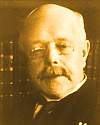
Died 18 Nov 1941 at age 77 (born 25 Jun 1864). quotes
German physical chemist who was one of the founders of modern physical chemistry. In 1889, he devised his theory of electric potential and conduction of electrolytic solutions (the Nernst Equation) and introduced the solubility product to explain precipitation reactions. In 1906, Nernst showed that it is possible to determine the equilibrium constant for a chemical reaction from thermal data, and in so doing he formulated what he himself called the third law of thermodynamics. This states that the entropy, (a thermodynamic measure of disorder in a system), approaches zero as the temperature goes towards absolute zero. For this, he was awarded the 1920 Nobel Prize in Chemistry. In 1918, he explained the H2-Cl2 explosion on exposure to light as an atom chain reaction.
German physical chemist who was one of the founders of modern physical chemistry. In 1889, he devised his theory of electric potential and conduction of electrolytic solutions (the Nernst Equation) and introduced the solubility product to explain precipitation reactions. In 1906, Nernst showed that it is possible to determine the equilibrium constant for a chemical reaction from thermal data, and in so doing he formulated what he himself called the third law of thermodynamics. This states that the entropy, (a thermodynamic measure of disorder in a system), approaches zero as the temperature goes towards absolute zero. For this, he was awarded the 1920 Nobel Prize in Chemistry. In 1918, he explained the H2-Cl2 explosion on exposure to light as an atom chain reaction.
Walther Nernst and the Transition to Modern Physical Science, by Diana Kormos Barkan. - book suggestion.
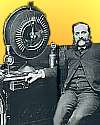
Died 18 Nov 1898 at age 71 (born 3 Sep 1827).
John Ernst Worrell Keely was a fraudulent American inventor. In 1873 he announced that he had discovered a new physical force that, if harnessed, would produce unheard-of power. He claimed, for example, to be able to produce from a quart of water enough fuel to move a 30-car train from Philadelphia to New York City. He began construction of an engine to perform this feat and by 1874 was able to give preliminary demonstrations of his machine. He made a great show of guarding the secret of the motor he was developing to obtain power "from intermolecular vibrations of ether," and scientists and engineers scoffed at his unverified claims.
John Ernst Worrell Keely was a fraudulent American inventor. In 1873 he announced that he had discovered a new physical force that, if harnessed, would produce unheard-of power. He claimed, for example, to be able to produce from a quart of water enough fuel to move a 30-car train from Philadelphia to New York City. He began construction of an engine to perform this feat and by 1874 was able to give preliminary demonstrations of his machine. He made a great show of guarding the secret of the motor he was developing to obtain power "from intermolecular vibrations of ether," and scientists and engineers scoffed at his unverified claims.
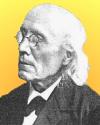
Died 18 Nov 1887 at age 86 (born 19 Apr 1801). quotes
German physicist and philosopher who was a key figure in the founding of psychophysics, the science concerned with quantitative relations between sensations and the stimuli producing them. He formulated the rule known as Fechner's law, that, within limits, the intensity of a sensation increases as the logarithm of the stimulus. He also proposed a mathematical expression of the theory concerning the difference between two stimuli, advanced by E. H. Weber. (These are now known to be only approximately true. However, as long as the stimulus is of moderate intensity, then the laws will give us a good estimate.) Under the name "Dr. Mises" he also wrote humorous satire. In philosophy he was an animist, maintaining that life is manifest in all objects of the universe.
German physicist and philosopher who was a key figure in the founding of psychophysics, the science concerned with quantitative relations between sensations and the stimuli producing them. He formulated the rule known as Fechner's law, that, within limits, the intensity of a sensation increases as the logarithm of the stimulus. He also proposed a mathematical expression of the theory concerning the difference between two stimuli, advanced by E. H. Weber. (These are now known to be only approximately true. However, as long as the stimulus is of moderate intensity, then the laws will give us a good estimate.) Under the name "Dr. Mises" he also wrote humorous satire. In philosophy he was an animist, maintaining that life is manifest in all objects of the universe.
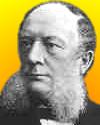
Died 18 Nov 1883 at age 60 (born 4 Apr 1823). quotes
Sir (Charles) William Siemens was a German-English engineer and inventor who devised the “regenerative system” of using waste gases to preheat fuel gases, for the open-hearth furnace used in steel manufacturing. He was also important in the telegraph industry, a pioneer in undersea cable. He assisted in the engineering of the London-Calcutta telegraph line (1869), a landmark achievement in communications. His name at birth was Carl Wilhelm Siemens, the younger brother of Ernst Werner Siemens (later ennobled as Werner von Siemens, who founded what is now the multinational Siemens company). Carl first visited England as agent for his brother to introduce an electroplating device. He returned in 1844, stayed, became a naturalized British subject in 1859, and known as Charles William Siemens until knighted as Sir William Siemens a few months before his death.«[NYT obituary gives date of death 18 Nov 1883. EB gives 19 Nov 1883.]
Sir (Charles) William Siemens was a German-English engineer and inventor who devised the “regenerative system” of using waste gases to preheat fuel gases, for the open-hearth furnace used in steel manufacturing. He was also important in the telegraph industry, a pioneer in undersea cable. He assisted in the engineering of the London-Calcutta telegraph line (1869), a landmark achievement in communications. His name at birth was Carl Wilhelm Siemens, the younger brother of Ernst Werner Siemens (later ennobled as Werner von Siemens, who founded what is now the multinational Siemens company). Carl first visited England as agent for his brother to introduce an electroplating device. He returned in 1844, stayed, became a naturalized British subject in 1859, and known as Charles William Siemens until knighted as Sir William Siemens a few months before his death.«[NYT obituary gives date of death 18 Nov 1883. EB gives 19 Nov 1883.]
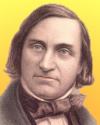
Died 18 Nov 1854 at age 39 (born 12 Feb 1815). quotes
British naturalist, pioneer in the field of biogeography, who analyzed the distribution of plant and animal life of the British Isles as related to certain geological changes. Forbes is considered by many to be the founder of the science of oceanography and marine biology, especially mollusks and starfishes. He participated in dredgings and expeditions in the Irish Sea (1834), France, Switzerland, Germany, Algeria (1836), Austria (1838), and the Mediterranean (1841-42). During this period, he pursued the study of life in the littoral zones (the ocean from the shore to the continental shelf) and developed an interest in the geographical distribution of animals. His study of the fauna of the Aegean Sea stimulated interest in marine biology. Unfortunately, he is best known for his “azoic theory” (1843), which stated that marine life did not exist on sea beds at depths over 300 fathoms (1800 feet). This was soon to be disproved, (but the desire to test this hypothesis has led to further exploration until, eventually, no depth has been completely unstudied). He became paleontologist to British Geological Survey in 1844.
British naturalist, pioneer in the field of biogeography, who analyzed the distribution of plant and animal life of the British Isles as related to certain geological changes. Forbes is considered by many to be the founder of the science of oceanography and marine biology, especially mollusks and starfishes. He participated in dredgings and expeditions in the Irish Sea (1834), France, Switzerland, Germany, Algeria (1836), Austria (1838), and the Mediterranean (1841-42). During this period, he pursued the study of life in the littoral zones (the ocean from the shore to the continental shelf) and developed an interest in the geographical distribution of animals. His study of the fauna of the Aegean Sea stimulated interest in marine biology. Unfortunately, he is best known for his “azoic theory” (1843), which stated that marine life did not exist on sea beds at depths over 300 fathoms (1800 feet). This was soon to be disproved, (but the desire to test this hypothesis has led to further exploration until, eventually, no depth has been completely unstudied). He became paleontologist to British Geological Survey in 1844.
Died 18 Nov 1472 at age 69 (born 2 Jan 1403).
Greek scholar.
Greek scholar.
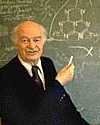
In 1970, Nobel Prize winner, Linus Pauling declared this day that large doses of Vitamin C could ward off the common cold. He proposed that regular intake of vitamin C in amounts far higher than the officially sanctioned RDA (Recommended Daily Allowance) could help prevent and shorten the duration of the common cold. He concluded that the optimal daily intake of vitamin C for most people is 2.3 grams to 10 grams daily. Although the medical establishment immediately voiced their strong opposition to this idea, many ordinary people believed Dr. Pauling and began taking large amounts of vitamin C. He wrote a book on the subject Vitamin C and the Common Cold (1970) which became a best-seller..
Linus Pauling in His Own Words: Selections From his Writings, Speeches and Interviews, by Barbara Marinacci. - book suggestion.
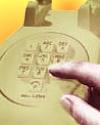
In 1963, the first telephone in the U.S. with push buttons instead of a rotary dial was placed in commercial service in Carnegie and Greensburg, Pa. This was a Touch-Tone telephone with 10 push buttons, manufactured by the Western Electric Manufacturing and supply Unit of the Bell System. The optional service was offered for an extra charge. Some previous marketing trials had taken place in Ohio and Pennsylvania. A 10 button dial was inserted into an adapter taking the place of the rotary dial. The use of 12 Button dials with * and # keys for special services came out rather quickly after the introduction of Touch Tone Service in 1963, and the 10 button dial was discontinued.

In 1950, the first fluoro-record reflector camera was announced. This could make x-ray pictures in one-sixth of the time previously required, and was used for gastro-instestinal surveys. The manufacturer was the Fairchild Camera and Instrument Corp., Jamaica, N.Y.

In 1913, the first airplane in the U.S. to perform a loop-the-loop was piloted by Lincoln Beachey over North Isalnd, San Diego, California. At a level of 1,000 feet, he brought his aircraft up with a swoop and a moment later was flying head downward. He completed the loop at a height of 300 feet. Ten days later he performed a triple loop. Beachey was one of the more colorful characters of early aviation. By 1912, he was a stunt pilot of great repute. His daring acts made him well known in aviation circles. In Chicago, he flew along a string of boxcars first rolling one wheel then the other alternatively along the car roofs as the train was rolling down the tracks. He died in 1915, at age 28, from a crash while performing stunts at the Panama-Pacific Exhibition, Cal.
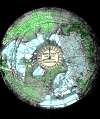
In 1883, standard time in the U.S. went into effect at noon for the first time due a decision of the American Railway Association. The actual local time, or “sun time” constantly changes as one moves either east or west. With the arrival of railroad travel, the situation raised problems for railway lines and passengers trying to synchronize schedules in different cities. The need for a system of standardized time was evident. The system adopted was first proposed by Charles F. Dowd (1825-1904), a school principal in New York state. North America was divided into four time zones, fifteen degrees of longitude, and one hour of "standard time" apart. Sir Stanford Fleming proposed the extension of the Dowd system to the whole world with 24 time zones.
In 1845, Charles Thurber was issued a U.S. patent for a Writing Machine he named the Chirographer (No. 4272). He is credited with the first U.S. patent on a typewriter with platen movement and automatic letter spacing, which was issued two years earlier, called “Thurber's Patent Printer” (No. 3,228, 26 Aug 1843).
In 1477, English printer William Caxton, (c.1422 - c.1491) produced the first book printed in England, Dictes or Sayengis of the Philosophres (Sayings of the Philosophers). A few years earlier, in Europe, he had learned the art of printing in Cologne (1471). In Bruges, in partnership with a copyist and bookseller, Colard Mansion, he produced the first book in the English language, Recuyell of the Historyes of Troye, (late 1474 or early 1475) translated from French by Caxton himself. In 1476, he returned to his native land, England, where he used his experience from abroad to set up a printing and publishing business "at the sign of the Red Pale" within the precincts of Westminster Abbey. In the next 15 years, he printed 107 works, including 74 books.«




